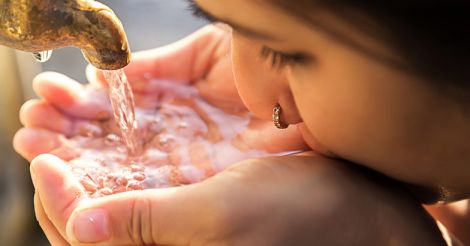In light of a recent central report that said 33 areas in Palakkad district and a place in Idukki are affected by fluoride contamination in drinking water, here’s a look at the risks posed by the inorganic, monatomic anion of fluorine.
Although fluoride is essential for the strength of bones and teeth, medical science says the human body requires only one ppm (parts per million) of the element.
An excess intake of fluoride can cause dental fluorosis, which causes cosmetic changes in the appearance of tooth enamel. The severity of the condition varies from person to person. In some people, yellow lines appear in the middle of the teeth. The stains look like markings by chalk. It can also cause cavities.
Similarly, excessive accumulation of fluoride in the bones can cause skeletal fluorosis. In advanced cases, skeletal fluorosis causes pain and damage to bones and joints. A total cure is impossible. However, Vitamin C and iron supplements can help prevent the spread of the disease.
Fluoride toothpaste
People in areas where water has a high fluoride content should abstain from using toothpaste that contains fluoride.
Groundwater recharging
The fluoride content is higher in areas where minerals such as fluorite, fluorapatite, and biotite deposits are found. These are formed from rocks under the earth. Higher content of calcium fluoride can also cause problems. A solution to this problem is groundwater recharging. Afforestation and the scientific creation of rain water storage also help in reducing fluoride presence.
We can also use purification machines to get water free of chemicals. Reverse osmosis (RO) plants should be grown in educational institutions. These can be set up at homes too.
Arsenic poisoning
Just like fluoride contamination, lowering of the water table in Kerala is likely to trigger arsenic poisoning at deeper levels, posing a serious health hazard. According to a study, the geological set-up in Kerala can trigger the release of arsenic from rocks if the groundwater level goes too low. This could have far-reaching consequences on water quality. So it is essential to discourage the dependence on borewells for drinking water and promote the use of dug wells instead.
Although arsenic is poison, some non-allopathic medicines contain arsenic in controlled quantities. Continued use of such medicines can cause problems. Taking bath in water that has a high content of arsenic can cause a disease called arsenic keratosis, which makes the skin thicker than normal.
Exposure to arsenic results in respiratory and gastrointestinal complaints, skin lesions, gangrene and even cancer. In India, high arsenic contamination was reported from Bihar’s Hooghly river.
Details provided by:
K.R. Selvaraj, deputy DMO, Palakkad.
Dr K. Sreekumar, additional chief medical superintendent, Railway Hospital, Palakkad.
Read more: Latest from Lifestyle | Green | Bharathapuzha down to a trickle

























